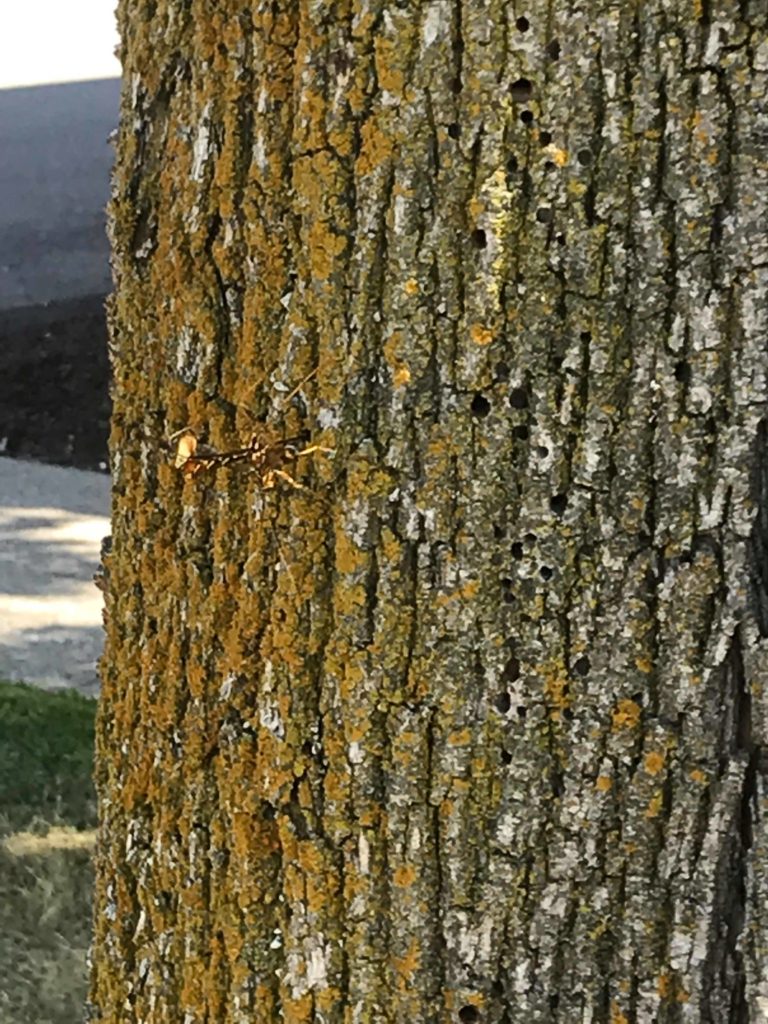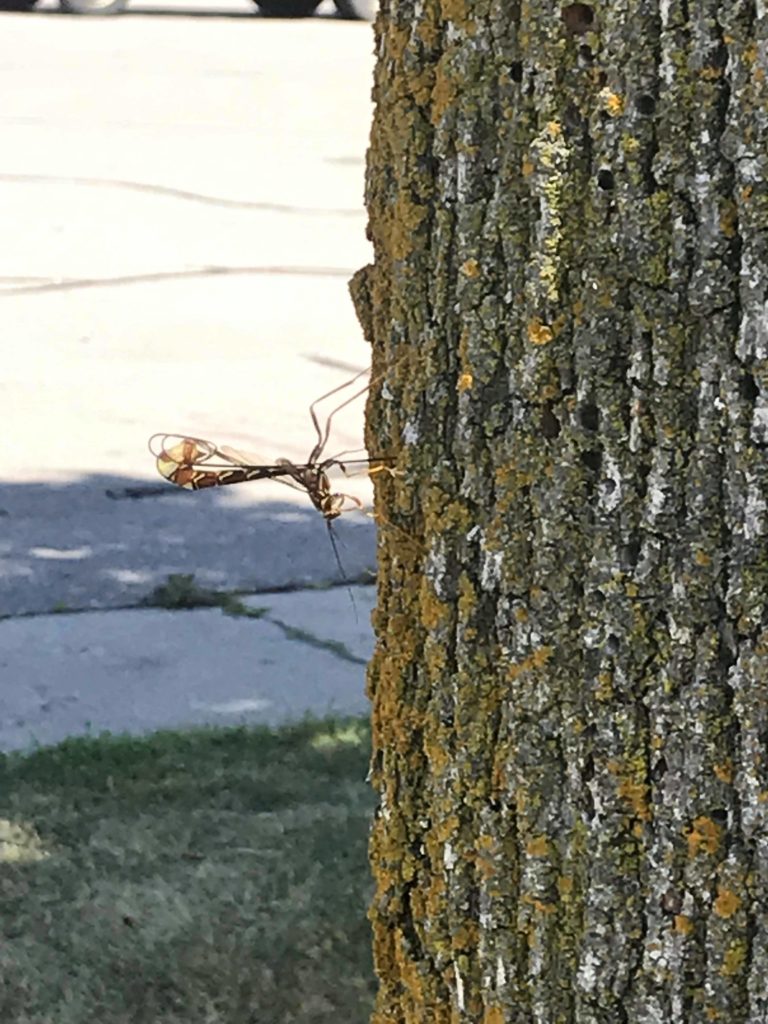
VASU: So this blog post is a bit different than our usual ones – where Matt and I share stories from our everyday life and connect it to climate change and carbon footprints.
Today’s blog is me sharing some thoughts and hopefully a creative insight that has been on my mind for a while now. It all started last year with a conversation among friends, who like me, are studying environmental studies and doing research linked to various aspects of climate change.
Our individual research looks into vastly different things like finance, water and even social change – yet what links us is our passion to see the world change for the better. What’s more interesting is that all of us come from different parts of the world and have vastly different upbringings. Yet we share this common passion for the environment so strongly that it made me wonder: what is the common link?
For me, it’s been a question at the back of my mind ever since we had the conversation. However, it was only in the last few weeks, when life happened and all well-laid plans of starting a PhD in the fall (for those of you who don’t know me, academia is my dream career!) seemed to be on the brink of falling apart, that I had an ‘aha’ moment.
The reason why we haven’t posted very often the last month has been because of a bunch of reasons – one being career shifts (for both of us) and also figuring out immigration issues. Dealing with multiple stresses really doesn’t help when the world itself seems to be going in the wrong direction (see – Arctic having wildfires and heatwaves or countries moving away from democracy or even a potential global food crisis caused by climate change).
For most people it seems like the world is moving forward, but for me, in times of higher stress, it seems especially overwhelming. It was over the last few days that I happened to come across a timely article in Psychology Today about Highly Sensitive People (HSP). HSP is a personality trait highlighted by psychologist Dr. Elaine Aron in the mid-90s.
According to Aron, “Highly Sensitive People (HSPs) are individuals with genetic characteristics that makes them deeply attuned and sensitive to their environments and relationships. They have high levels of empathy and emotional responsiveness – because their nervous system is wired slightly differently and is more prone to sensory information. All this attunement and processing means they are also often easily overstimulated. Given this high stimulation, HSPs also often display great creativity, insight, passion and caring for others” She mentions that about 20% of the population possesses this trait and if you are curious, you can self-evaluate via the HSP Scale.
This peaked my curiosity as I was intrigued by the description – it helped explain what I’ve always known about myself but unable to put into words. I am a person that cares a lot, even about things that do not affect me directly – sometimes this is a good thing as it creates more empathy and makes one concerned about abstract things like the environment or climate change, whereas other times (like over the past few weeks) it can be overwhelming.
My researcher mindset immediately pushed me to critically evaluate the concept from the point of science and what academic studies say on the topic. So here’s a small summary of what I found on HSP research studies:
- Changes in environmental conditions can cause a shift in our gene structure even in short generation times – which means climate change will have a direct impact in how future generations adapt and more importantly how they react psychologically to it.
- Apart from humans, animal studies show that approximately 100 other species (like fruit flies, monkeys and even certain fishes among others) have this minority trait. This is interesting as it shows that there is no ideal species type, but rather versions that can allow one species to survive various environmental dangers or changes. This is super important, if we are talking about Darwin’s theory of survival of the fittest and the evolution of species – which means that personality traits in humans might actually play a role when it comes to climate change adaptation!
- Being HSP is only an advantage if its in the minority – for example, if a particular patch of grass is especially nutritious, and if all cows go there to eat it – there is no value in it. Aron gives the example of a traffic jam and if only a few people know the shortcuts, it serves the situation better as traffic might reduce. But if everyone goes through those short cuts, then it is no longer of any value and creates another traffic jam.
- Another study looking at this trait in Rhesus monkeys show that those monkeys that were paired with more skilled mothers vs. ordinary mothers were raised with huge advantages. This study done by Soumi (2011), showed that those raised by skilled mothers were found to have better resilience to stress and in fact became leaders of their social group. This is amazing news for HSPs – as it means their high responsiveness can be used to guide others when it comes to stressful times like those posed by climate change.
- According to Aron, HSPs exhibit four very interesting traits, which is seen under the acronym of DOES:
- Depth of Processing – fMRI studies that look at brain activity show that HSPs have brain activation in areas of the brain which do a lot more deeper processing when shown slightly different pictures. Even more interesting is that in some cultural studies, we see that those from collective cultures (like Asia) notice the big picture, whereas those coming from individualistic cultures (like in North America) notice the smaller details first. However, more interestingly, people that exhibit the HSP trait, weren’t affected by their cultural background at all! For me this explains the common link among those passionate about the environment and coming from different cultures, and yet being the minority in our way of thinking.
- Overstimulation – this is the downer of this trait – where the optimal level of arousal (or the balance where humans function best) is reached very quickly. This means HSPs have higher burnout rates and definitely don’t do well under a lot of stimulation – much like me over the last few weeks!
- Emotionally Reactive or Empathy – HSPs learn from both positive and negative experiences (which is unusual as most people learn from only negative experiences – see loss aversion). One can only learn from experiences that one cares about, so in order for HSPs to process information deeply they need to have stronger reactions to them. Studies have shown that HSPs have more activity in the mirror neurons, which are neurons that allow us to show empathy for others and experience (to some degree) how others feel. This is a good sign for those that need to understand the experiences of people from different cultures or countries, especially with climate change knowing no boundaries. Personally I can attest to this whenever I hear bad news stories (from around the world) related to the environment it impacts me emotionally. Part of the reason why we started this blog is to make these very abstract events seem relatable and create more empathy among those that might not organically feel this way.
- Sensing the Subtle – this is the heart of the trait – where HSPs can notice sensory subtleties in their environment. For example, I can pick up non-verbal cues and people’s moods very quickly and even notice the smallest physical differences in a room I am familiar with. My family likes to tease me about this, but only after this research was I able to make sense of why it happens. It is the way HSP brains pick up on sensory clues in their environment. Evolutionarily this is a good survival tactic as small subtleties or differences in our environment can be a life-saver at times. This is important because humans often forget the past easily (even what last summer looked like) and it is in times like these (where the climate is changing but it is still relatively stable), that noticing subtle differences in local weather patterns or even around the world can be life-saving when comes to our futures. And remembering or talking about this is especially important because it is the only way we can push for action or societal change.


Now that you know what being an HSPs means, it is important to remember that genes are not destiny, but rather a predisposition at the most. That is why, if you are an HSP, I suggest using your high responsiveness, empathy and creativity to your advantage and for the good of others (especially when it comes to climate change).
Listening to an AOM podcast of Prof. John Kounios, it seems that for creativity and insights to kick-in, there is also a need for safe space. Mood is the single most powerful factor when it comes to inspiring powerful insights. It is much like thinking on a full stomach, rather than an empty one. This is why if you are not an HSP, then you are even more integral to creating the ‘safe’ space (much like that skilled mother monkey) that is needed to allow creative minds to come up with innovative solutions related to climate change. For me, in times of stress, it means surrounding myself with support systems that not only understand my personality (part of which also means becoming more self-aware), but in doing so, allow me to take chances with crazy ideas that might just be insightful.

Being in a safe space (mentally and also physically) has allowed us to share personal stories that could inspire others to look at sensitivity a bit differently. Whether it is about the environment, the people around you and also in terms of climate change – sensitivity is a trait that should be treasured rather than dismissed. Because noticing every little change (including hotter days, more frequent extreme weather, more floods, and a less rich biodiversity) can matter if we are to address our carbon footprints and climate adaptation in time.
